AMD Zen 3 Ryzen Deep Dive Review: 5950X, 5900X, 5800X and 5600X Tested
by Dr. Ian Cutress on November 5, 2020 9:01 AM EST
When AMD announced that its new Zen 3 core was a ground-up redesign and offered complete performance leadership, we had to ask them to confirm if that’s exactly what they said. Despite being less than 10% the size of Intel, and very close to folding as a company in 2015, the bets that AMD made in that timeframe with its next generation Zen microarchitecture and Ryzen designs are now coming to fruition. Zen 3 and the new Ryzen 5000 processors, for the desktop market, are the realization of those goals: not only performance per watt and performance per dollar leaders, but absolute performance leadership in every segment. We’ve gone into the new microarchitecture and tested the new processors. AMD is the new king, and we have the data to show it.
New Core, Same 7nm, Over 5.0 GHz!
The new Ryzen 5000 processors are drop-in replacements for the Ryzen 3000 series. Anyone with an AMD X570 or B550 motherboard today, with the latest BIOS (AGESA 1081 or above), should be able to buy and use one of the new processors without a fuss. Anyone with an X470/B450 board will have to wait until Q1 2021 as those boards are updated.
As we’ve previously covered, AMD is launching four processors today for retail, ranging from six cores up to sixteen cores.
| AMD Ryzen 5000 Series Processors Zen 3 Microarchitecture |
||||||
| AnandTech | Cores Threads |
Base Freq |
Turbo Freq |
L3 Cache |
TDP | MSRP |
| Ryzen 9 5950X | 16c/32t | 3400 | 4900 | 64 MB | 105 W | $799 |
| Ryzen 9 5900X | 12c/24t | 3700 | 4800 | 64 MB | 105 W | $549 |
| Ryzen 7 5800X | 8c/16t | 3800 | 4700 | 32 MB | 105 W | $449 |
| Ryzen 5 5600X | 6c/12t | 3700 | 4600 | 32 MB | 65 W | $299* |
*Comes with Bundled CPU Cooler
All the processors have native support for DDR4-3200 memory as per JEDEC standards, although AMD recommends something slightly faster for optimum performance. All the processors also have 20 lanes of PCIe 4.0 for add-in devices.
The Ryzen 9 5950X: 16 Cores at $799
The top processor is the Ryzen 9 5950X, with 16 cores and 32 threads, offering a base frequency of 3400 MHz and a turbo frequency of 4900 MHz – on our retail processor, we actually detected a single core frequency of 5050 MHz, indicating that this processor will turbo above 5.0 GHz with sufficient thermal headroom and cooling!
This processor is enabled through two eight core chiplets (more on chiplets below), each with 32 MB of L3 cache (total 64 MB). The Ryzen 9 5950X is rated at the same TDP as the Ryzen 9 3950X, at 105 W. The peak power will be ~142 W, as per AMD’s socket design, on motherboards that can support it.
For those that don’t read the rest of the review, the short conclusion for the Ryzen 9 5950X is that even at $799 suggested retail price, it enables a new level of consumer grade performance across the board. The single thread frequency is crazy high, and when combined with the new core design with its higher IPC, pushes workloads that are single-core limited above and beyond Intel’s best Tiger Lake processors. When it comes to multi-threaded workloads, we have new records for a consumer processor across the board.
The Ryzen 9 5900X: 12 Cores at $549
Squaring off against Intel’s best consumer grade processor is the Ryzen 9 5900X, with 12 cores and 24 threads, offering a base frequency of 3700 MHz and a turbo frequency of 4800 MHz (4950 MHz was observed). This processor is enabled through two six-core chiplets, but all the cache is still enabled at 32 MB per chiplet (64 MB total). The 5900X also has the same TDP as the 3900X/3900XT it replaces at 105 W.
At $549, it is priced $50 higher than the processor it replaces, which means that for the extra 10% cost it will have to showcase that it can perform at least 10% better.
The Ryzen 7 5800X: 8 Cores at $449
After AMD showcased a quad core processor under $100 in the last generation, it takes a lot of chutzpah to offer an eight core processor for $449 – AMD stands by its claims that this processor offers substantial generational performance improvements. The new AMD Ryzen 7 5800X, with eight cores and sixteen threads, is set to go up against Intel’s Core i7-10700K, also an eight core / sixteen thread processor.
The Ryzen 7 5800X has a base frequency of 3800 MHz and a rated turbo frequency of 4700 MHz (we detected 4825 MHz), and uses a single eight-core chiplet with a total 32 MB of L3 cache. The single core chiplet has some small benefits over a dual chiplet design where some cross-CPU communication is needed, and that comes across in some of our very CPU-limited gaming benchmarks. This processor also has 105 W TDP (~142 W peak).
The Ryzen 5 5600X: 6 Cores for $299
The cheapest processor that AMD is releasing today is the Ryzen 5 5600X, but it is also the only one that comes with a CPU cooler in box. The Ryzen 5 5600X has six cores and twelve threads, running at a base frequency of 3700 MHz and a peak turbo of 4600 MHz (4650 MHz measured), and is the only CPU to be given a TDP of 65 W (~88 W peak).
The single chiplet design means 32 MB of L3 cache total (technically it’s still the same that a single core can access as the Ryzen 9 parts, more on that later), and will be put up against Intel’s six-core Core i5-10600K, which also retails in a similar ballpark.
Despite being the cheapest and technically the slowest processor of the bunch, I was mightily surprised by the performance of the Ryzen 5 5600X: similar to the Ryzen 9 5950X, in single threaded benchmarks, it completely knocks the socks off of anything Intel has to offer – even Tiger Lake.
Why Ryzen 5000 Works: Chiplets
At a high level, the new Ryzen 5000 'Vermeer' series seem oddly familiar to the last generation Ryzen 3000 ‘Matisse’ series. This is actually by design, as AMD is fully leveraging their chiplet design methodology in the new processors.
To introduce some terminology, AMD creates two types of chiplets. One of them has the main processing cores, and is called a core complex die or CCD. This is the one that is built on TSMC's 7nm process. The other chiplet is an interconnect die with I/O, known as an IO die or IOD - this one has the PCIe lanes, the memory controllers, the SATA ports, the connection to the chipset, and helps control power delivery as well as security. In both the previous generation and the new generation, AMD pairs one of its IO dies with up to two 8-core chiplets.
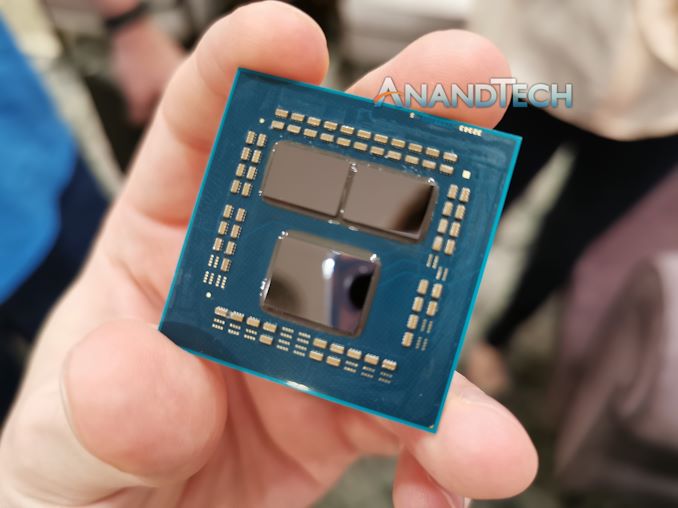
Ryzen 3000 processor without heatspreader, showing two core chiplets and one IO die.
This is possible because the new core chiplets contain the same protocols for interconnect, physical design, and power constraints. AMD is able to leverage the execution of the previous platform and generation such that when the core connections are identical, despite the different internal structures (Zen 3 vs Zen 2), they can still be put together and executed in a known and successful fashion.
As with the previous generation, the new Zen 3 chiplet is designed with eight cores
Zen 3 is a New Core Design
By keeping the new 8-core Zen 3 chiplet the same size and same power, this obviously means that AMD had to build a core that fits within those constraints but also affords a performance and performance efficiency uplift in order to make a more compelling design. Typically when designing a CPU core, the easiest thing to do is to take the previous design and upgrade certain parts of it – or what engineers call tackling ‘the low hanging fruit’ which enables the most speed-up for the least effort. Because CPU core designs are built to a deadline, there are always ideas that never make it into the final design, but those become the easiest targets for the next generation. This is what we saw with Zen 1/Zen+ moving on to Zen 2. So naturally, the easiest thing for AMD to do would be the same again, but with Zen 3.
However, AMD did not do this. In our interviews with AMD’s senior staff, we have known that AMD has two independent CPU core design teams that aim to leapfrog each other as they build newer, high performance cores. Zen 1 and Zen 2 were products from the first core design team, and now Zen 3 is the product from the second design team. Naturally we then expect Zen 4 to be the next generation of Zen 3, with ‘the low hanging fruit’ taken care of.
In our recent interview with AMD’s Chief Technology Officer, Mark Papermaster, we were told that if you were to look at the core from a 100,000 foot level, you might easily mistake that the Zen 3 core design to be similar to that of Zen 2. However, we were told that because this is a new team, every segment of the core has been redesigned, or at the very least, updated. Users who follow this space closely will remember that the branch predictor used in Zen 2 wasn’t meant to come until Zen 3, showing that even the core designs have an element of portability to them. The fact that both Zen 2 and Zen 3 are built on the same TSMC N7 process node (the same PDK, although Zen 3 has the latest yield/consistency manufacturing updates from TMSC) also helps in that design portability.
AMD has already announced the major change that will be obvious to most of the techies that are interested in this space: the base core chiplet, rather than having two four-core complexes, has a single eight-core complex. This enables each core to access the whole 32 MB of L3 cache of a die, rather than 16 MB, which reduces latency of memory accesses in that 16-to-32 MB window. It also simplifies core-to-core communication within a chiplet. There are a couple of trade-offs to do this, but overall it is a good win.
In fact there are a significant number of differences throughout the core. AMD has improved:
- branch prediction bandwidth
- faster switching from the decode pipes to the micro-op cache,
- faster recoveries from mispredicts,
- enhanced decode skip detection for some NOPs/zeroing idioms
- larger buffers and execution windows up and down the core,
- dedicated branch pipes,
- better balancing of logic and address generation,
- wider INT/FP dispatch,
- higher load bandwidth,
- higher store bandwidth,
- better flexibility in load/store ops
- faster FMACs
- A wide variety of faster operations (including x87?)
- more TLB table walkers
- better prediction of store-to-load forward dependencies
- faster copy of short strings
- more AVX2 support (VAES, VPCLMULQD)
- substantially faster DIV/IDIV support
- hardware acceleration of PDEP/PEXT
Many of these will be explained and expanded upon over the next few pages, and observed in the benchmark results. Simply put, this is something more than just a core update – these are genuinely new cores and new designs that required new sheets of paper to be built upon.
A number of these features, such as wider buffers and increased bandwidth, naturally come with the question about how AMD has kept the power the same for Zen 3 compared to Zen 2. Normally when a core gets wider, that means more silicon has to be turned on all the time, and this influences static power, or if it all gets used simultaneously, then there is higher active power.
When speaking with Mark Papermaster, he pointed to AMD’s prowess in physical implementation as a key factor in this. By leveraging their knowledge of TSMC’s 7nm (N7) process, as well as updates to their own tools to get the best out of these designs, AMD was able to remain power neutral, despite all this updates and upgrades. Part of this also comes from AMD’s long standing premium partner relationship with TMSC, being able to enable better design technology co-optimization (DTCO) between floorplan, manufacturing, and product.
AMD’s Claims
The CPU marketing teams from AMD, since the launch of first generation Zen, have been very accurate in their performance claims, even to the point of understating performance from time to time. Aside from promoting performance leadership in single thread, multi-thread, and gaming, AMD promoted several metrics for generation-on-generation improvement.
+19% IPC
The key metric offered by AMD was a +19% IPC uplift from Zen 2 to Zen 3, or rather a +19% uplift from Ryzen 5 3800XT to Ryzen 5 5800X when both CPUs are at 4.0 GHz and using DDR4-3600 memory.
In fact, using our industry benchmarks, for single threaded performance, we observed a +19% increase in CPU performance per clock. We have to offer kudos to AMD here, this is the second or third time they've quoted IPC figures which we've matched.
In multithreaded SPECrate, the absolute gain was only around 10% or so, given that faster cores also require more bandwidth to main memory, which hasn’t been provided in this generation. This means that there are some bottlenecks to which a higher IPC won’t help if more cores require the same resources.
For real-world tests, across our whole suite, we saw an average +24% uplift. For explicitly multithreaded tests, we saw ranges from even performance up to +35%, while for explicitly single threaded tests, this ranged from even performance up to +57%. This comes down to execution/compute bound tests getting bigger speedups over memory bound workloads.
Best Gaming
For gaming, the number was given as a +5 to +50% uplift in 1920x1080 gaming at the high preset, comparing a Ryzen 9 5900X against the Ryzen 9 3900XT, depending on the benchmark.
In our tests at CPU limited settings, such as 720p or 480p minimum, we saw an average +44% frames-per-second performance uplift comparing the Ryzen 9 5950X to the Ryzen 9 3950X. Depending on the test, this ranged from +10% to +80% performance uplift, with key gains in Chernobylite, Borderlands 3, Gears Tactics, and F1 2019.
For our more mainstream gaming tests, run at 1920x1080 with all the quality settings on maximum, the performance gain averaged around +10%. This spanned the gamut from an equal score (World of Tanks, Strange Brigade, Red Dead Redemption), up to +36% (Civilization 6, Far Cry 5).
Perhaps the most important comparison is the AMD Ryzen 9 5950X against the Intel Core i9-10900K. In our CPU limited tests, we get a +21% average FPS win for the AMD at CPU-limited scenarios, ranging from +2% to +52%. But in our 1080p Maximum settings tests, the results were on average neck-and-neck, swaying from -4% to +6%. (That result doesn’t include the one anomaly in our tests, as Civilization 6 shows a +43% win for AMD.)
Head-to-Head Performance Matchups
Based on core counts and pricing, the new Ryzen 5000 series processors closely align with some of Intel’s most popular Comet Lake processors, as well as the previous generation AMD hardware.
| Q4 2020 Matchups | ||||||
| AMD Ryzen 5000 |
Cores | SEP | Tray 1ku |
Cores | Intel Core 10th Gen |
|
| Ryzen 9 5950X | 16C | $799 | vs. | $999 | 18C | Core i9-10980XE* |
| Ryzen 9 5900X | 12C | $549 | vs. | $488 | 10C | Core i9-10900K |
| Ryzen 7 5800X | 8C | $449 | vs. | $453 | 10C | Core i9-10850K |
| $374 | 8C | Core i7-10700K | ||||
| Ryzen 5 5600X | 6C | $299 | vs. | $262 | 6C | Core i5-10600K |
*Technically a high-end desktop platform processor, almost unavailable at MSRP.
Throughout this review we will be referencing these comparisons, and will eventually break-out each processor into its own analysis breakdown.
More In This Review
As this is our Deep Dive coverage into Zen 3, we are going to go into some nitty-gritty details. Over the next few pages, we will go over:
- Improvements to the core design (prefetchers, buffers, execution units, etc)
- Our microbenchmark tests (core-to-core latency, cache hierarchy, turbo ramping)
- New Instructions, Improved instructions
- SoC Power and Per-Core Power
- SPEC2006 and SPEC2017 results
- CPU Benchmarks (Office, Science, Simulation, Rendering, Encoding, Web, Legacy)
- Gaming Benchmarks (11 tests, 4 settings per test, with RTX 2080 Ti)
- Conclusions and Final Remarks


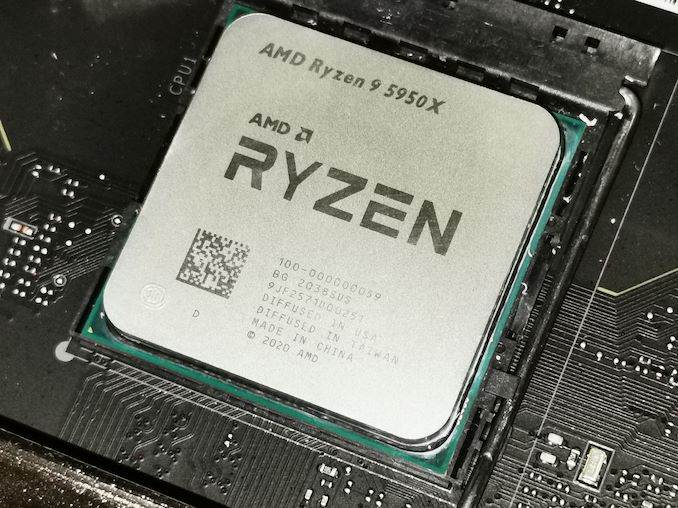
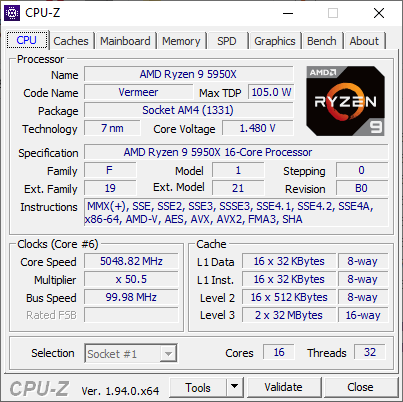
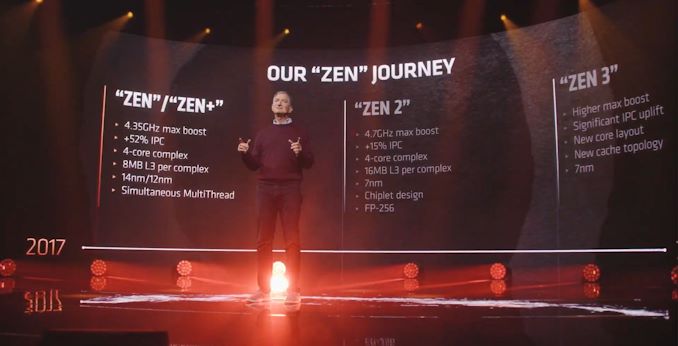
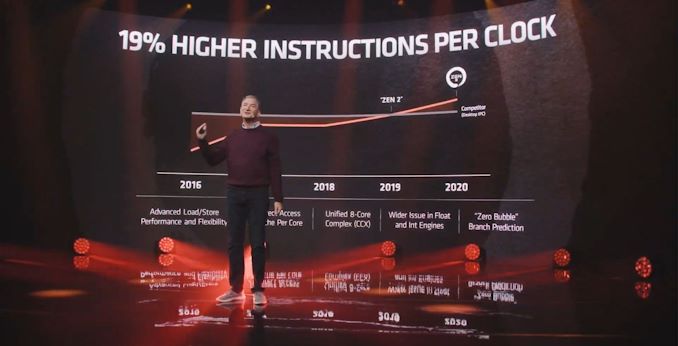








339 Comments
View All Comments
5j3rul3 - Thursday, November 5, 2020 - link
Rip Intel🤩🤩🤩Smell This - Thursday, November 5, 2020 - link
Chipzillah has got good stuff ... everyone is "just dandy" for the most part...
but, AMD has kicked Intel "night in the ruts" in ultimate price/performance with Zen3
Kangal - Saturday, November 7, 2020 - link
True, but the price hikes really hurt.For the Zen3 chips, it's only worth getting the:
- r9-5950X for the maximum best performance
- r5-3600X for the gaming performance (and decent value).
The 12 core r9-5900X is a complete no-buy. Whilst the r7-5800X is pretty dismal too, so both chips really need to be skipped. Neither of them have an Overclocking advantage. And there's just no gaming advantage to them over the 5600X. For more performance, get a 3950X or 5950X. And when it comes to productivity, you're better served with the Zen2 options. You can get the 3700 for much cheaper than the 5800X. Or for the same price you can get the 3900X instead.
Otherwise, if you're looking for the ultimate value, as in something better than the 5600X value... you can look at the 3600, 1600f, 3300X, 3100 chips. They're not great for gaming/single-core tasks, but they're competent and decent at productivity. Maybe even go into the Used market for some 2700X, 2700, 1800X, 1700X, 1700, 1600X, and 1600 chips as these should be SIGNIFICANTLY cheaper. Such aggressive pricing puts these options at better value for gaming (surprising), and better value for productivity (unsurprising).
DazzXP - Saturday, November 7, 2020 - link
Price hike doesn't really hurt that much, AMD was making very little money on their past Ryzen's because they had to contend with Intel Mindshare and throw more cores in as they did not quite have IPC and clock speeds, now they have all. It was as expected to be honest.Silma - Sunday, November 8, 2020 - link
Do you have any recommendations for motherboards for either a Zen3 or a Zen 2 (depending on availability of processors)? I want to spend as litte as possible on it, but it miust be compatible with 128 GB of RAM.AdrianBc - Sunday, November 8, 2020 - link
If you really intend to use 128 GB of RAM at some point in the future, you should use ECC RAM, because the risk of errors is proportional with the quantity of RAM.A good motherboard was ASUS Pro WS X570-ACE (which I use) previously at $300 but right now it is available at much higher prices ($370), for some weird reason.
If you want something cheap with 128 GB and ECC support, the best you can do is an ASRock micro-ATX board with the B550 chipset. There are several models and you should compare them. For example an ASRock B550M PRO4 is USD 90 at Amazon.
Silma - Wednesday, November 11, 2020 - link
Thanks for the input! Is ECC really necessary? The primary objective of the PC memory would be loading huge sound libraries in RAM for orchestral compositions. The PC would serve at the same time as gaming PC + Office PC.Spunjji - Sunday, November 8, 2020 - link
In the context of a whole system? Not really, no.In the context of an upgrade? Not at all, if you have a 4xx board you'll be good to go in January without having to buy a new board. That's something that hasn't been possible for Intel for a while, and won't be again until around March, when you'll be able to upgrade from a mediocre power hog of a chip to a more capable power hog of a chip.
Comparing new to used in terms of value of a *brand new architecture* doesn't really make much sense, but go for it by all means 👍 The fact remains that these have the performance to back up the cost, which you can see in the benchmarks.
leexgx - Sunday, November 8, 2020 - link
I would aim for the 5600x minimum unless your really trying to Save $100 as the 5600x is a good jump over the 3700x/3600xbiostud - Monday, November 9, 2020 - link
Uhm, no? For me the 5900X would make perfect sense. I game and work with/photo video editing, and would like to have my computer for a long time. The 5950X costs too much for my needs, the 5900X offers 50% more cores than the 5800X for $100 and the 5600X hasn't got enough cores when video editing. (Although I'm waiting for next socket before upgrading my 5820k)